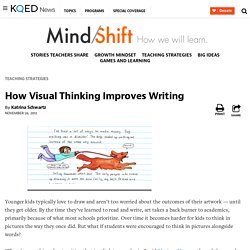

Periodic Table of Storytelling. 8 Classic storytelling techniques for engaging presentations. A good public speaker takes their audience on a journey, leaving them feeling inspired and motivated.

But structuring your speech to get your ideas across and keep your audience engaged all the way through is tricky. Try these eight storytelling techniques for a presentation that wows. You’re doing a presentation, so you start with the facts you want to get across. Wrong! Humans are hardwired for stories. Deliver a presentation that captures the hearts and heads of your audience by stealing one of these classic storytelling techniques. 1. The monomyth (also called the hero’s journey), is a story structure that is found in many folk tales, myths and religious writings from around the world. In a monomyth, the hero is called to leave their home and sets out on a difficult journey. After overcoming a great trial, they return home with a reward or newfound wisdom – something which will help their community.
Good for: See also: The Hero’s Journey by Joseph Campbell 2. This Sentence Has Five Words. Flash drafting our way to a “best first draft”. Strategies in Visual Narrative. Strategies in Visual Narrative ©Werner Hammerstingl 1998,1999 Narrative 1.

That part of a deed or document which narrates the essential or relevant facts 2. An anccount or narration; a tale, recital (of facts etc.) 1566. We can distinguish between linear and non-linear narrative. Linear narrative: Is built on traditional notions of linearity and univocity, has a beginning, middle and end and is usually logically sequential in nature. Non-linear narrative: Contains elements such as : interruption, circular and unfinished references, chronological anarchy. In this lecture we are going to explore the dynamics and strategies involved in creating a narrative structure for still and time-based visual material.
Take a single photograph - any photograph - and you have narrative. Because you have signification (the fact or property of being significant or expressive of something). Summary of Codes (1) 1 Perceptive codes: studied within the psychology of perception. How Visual Thinking Improves Writing. Younger kids typically love to draw and aren’t too worried about the outcomes of their artwork — until they get older.

By the time they’ve learned to read and write, art takes a back burner to academics, primarily because of what most schools prioritize. Over time it becomes harder for kids to think in pictures the way they once did. But what if students were encouraged to think in pictures alongside words? “There’s something about writing that is a link to your brain,” said Marissa Moss, author of the popular children’s book series Amelia’s Notebook. In the books, Moss takes on the persona of a little girl expressing her ideas about the world and people around her.
Taking a cue from Moss, teachers from Oak Knoll Elementary School in Menlo Park, Calif., decided to have their students keep notebooks in a similar style. “They’re not used to being given permission to write about whatever they want,” Clancy said. School of Education at Johns Hopkins University-In A Single Bound: A Short Primer on Comics for Educators. By Drego Little There is a long and well-documented history of prejudice against comics and what educators think they might represent.

Despite this history, comics have a strong following among writers and other serious artists. Sadly, this admiration for comics and their creators has not been widespread among educators. There are many reasons for this, but the most prominent of them is that most teachers either don't know what comics do, or aren't familiar enough with the medium to make good choices. It is important for teachers, especially teachers of reading, to understand the opportunity that comics represent. The Nuts and Bolts of Comics Comics are still not considered "reading" by too many educators; an attitude that persists even though when a student is reading a comic (especially a good one) he or she is actually reading on three different levels. Closure provides most of the action in comics. Writing for Visual Thinkers: Narrative Structures. How Stories Change the Brain. Ben’s dying.

That’s what Ben’s father says to the camera as we see Ben play in the background. Ben is two years old and doesn’t know that a brain tumor will take his life in a matter of months. Ben’s father tells us how difficult it is to be joyful around Ben because the father knows what is coming. But in the end he resolves to find the strength to be genuinely happy for Ben’s sake, right up to Ben’s last breath. Everyone can relate to this story. A recent analysis identifies this “hero’s journey” story as the foundation for more than half of the movies that come out of Hollywood, and countless books of fiction and nonfiction. Why are we so attracted to stories? Why the brain loves stories The first part of the answer is that as social creatures who regularly affiliate with strangers, stories are an effective way to transmit important information and values from one individual or community to the next.
Think of this as the “car accident effect.”